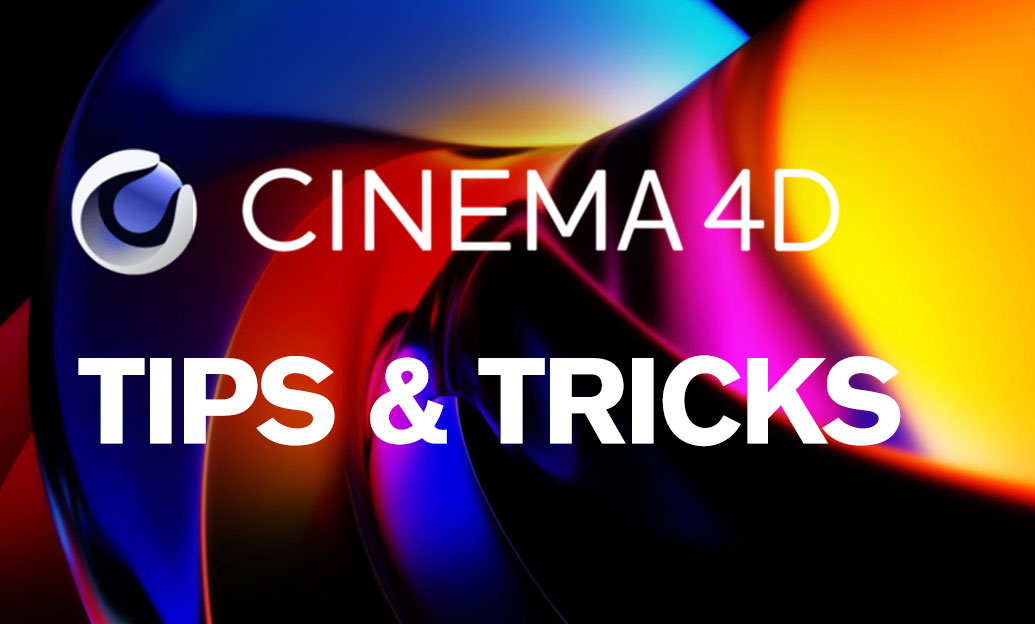Your Cart is Empty
Customer Testimonials
-
"Great customer service. The folks at Novedge were super helpful in navigating a somewhat complicated order including software upgrades and serial numbers in various stages of inactivity. They were friendly and helpful throughout the process.."
Ruben Ruckmark
"Quick & very helpful. We have been using Novedge for years and are very happy with their quick service when we need to make a purchase and excellent support resolving any issues."
Will Woodson
"Scott is the best. He reminds me about subscriptions dates, guides me in the correct direction for updates. He always responds promptly to me. He is literally the reason I continue to work with Novedge and will do so in the future."
Edward Mchugh
"Calvin Lok is “the man”. After my purchase of Sketchup 2021, he called me and provided step-by-step instructions to ease me through difficulties I was having with the setup of my new software."
Mike Borzage
Cinema 4D Tip: Boost Productivity in Cinema 4D with Essential Keyboard Shortcuts
October 06, 2025 2 min read

Keyboard shortcuts can significantly boost your productivity when working on complex scenes or tight deadlines. They reduce the time spent searching through menus and free you to focus on creativity. Below is an overview of some indispensable shortcuts that streamline navigation, object manipulation, and project organization. Even small commands that you use repeatedly can add up to tremendous time savings over the course of a project.
One of the most useful shortcuts for frequent modeling adjustments is quickly switching tools for moving, rotating, and scaling. Streamlining these commands means less menu-diving and more direct manipulation:
- E to activate the Move tool
- R to activate the Rotate tool
- T to activate the Scale tool
Efficient navigation is equally important. Reorienting the view is a constant task, and having the right shortcuts at your fingertips keeps the creative momentum high:
- Alt + Left Mouse Button to rotate your view
- Alt + Middle Mouse Button to pan across the scene
- Alt + Right Mouse Button to zoom in or out
- S to frame the current selection in the viewport
When selecting objects or components, quick multi-selection shortcuts help maintain focus on the design rather than the interface. Consider the following:
- Shift + Click to add to your current selection
- Ctrl/Cmd + Click to toggle individual objects or polygons in your selection
- Ctrl/Cmd + A to select all objects in the scene or all points/polygons in the current selection mode
Scene organization shortcuts are especially beneficial on large projects. A neat hierarchy, along with swift naming and grouping, keeps everything clear and manageable:
- Ctrl/Cmd + G to group selected objects
- Return/Enter to quickly rename objects
- Alt + G to create a Null object around the selected ones
Don’t forget the practical viewport shortcuts either. They allow you to switch between different display modes, letting you analyze your scene from diverse angles. This can help confirm your design choices before spending time on test renders:
- NB to toggle between Gouraud and Quick Shading
- NQ to display wireframe shading
Integrating these commands into your routine will speed up the process of tweaking models, organizing data in the Object Manager, and customizing scenes. The less you rely on mouse-driven searches through various panels, the more fluid your workflow becomes. Whenever you feel a slowdown, think about whether there’s a shortcut that can be assigned or learned to optimize that particular process even further.
As your Cinema 4D projects grow in complexity, well-chosen shortcuts become indispensable for saving valuable time. Mastering them also reduces the potential for errors, since each command is precisely triggered by your fingertips. Over time, each keystroke evolves into an intuitive muscle memory, freeing you to focus on polishing the creative details that make your work stand out.
These tips are just a starting point. For additional insights, resources, or Cinema 4D tools, visit NOVEDGE. You’ll find professional advice, software solutions, and more ways to refine your skill set. And if you’re exploring new functionality or upgrading your software, NOVEDGE can guide you to the right products to keep your pipeline efficient and effective.
You can find all the Cinema 4D products on the NOVEDGE web site at this page.
Also in Design News

ZBrush Tip: Optimizing ZBrush Workflow: Strategies for Efficient Project File Management Using Project History
October 06, 2025 2 min read
Read More
AutoCAD Tip: Enhance Productivity with AutoCAD's Matchprop Command for Consistent Property Transfers
October 06, 2025 2 min read
Read More
Bluebeam Tip: Enhancing PDF Markups with Custom Columns for Streamlined Data Management
October 06, 2025 2 min read
Read MoreSubscribe
Sign up to get the latest on sales, new releases and more …


